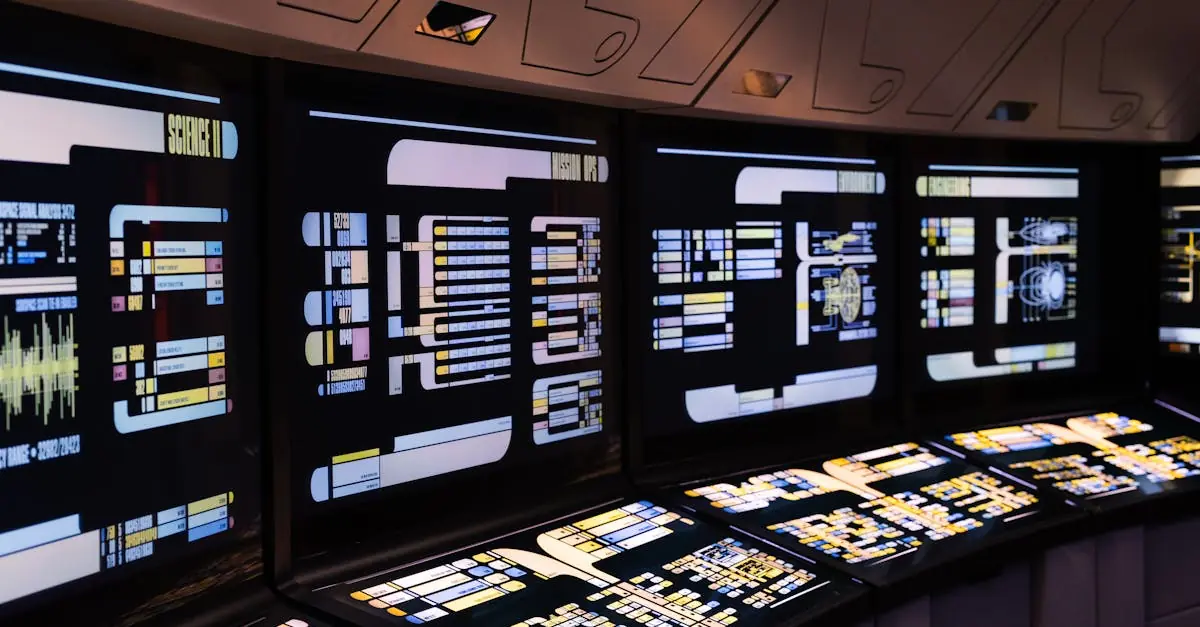Table of Contents
ToggleIn a world where space exploration and earthly needs collide, dual-use space technologies are the unsung heroes of innovation. These remarkable tools don’t just launch rockets; they also tackle everyday challenges like disaster response and climate monitoring. Imagine a satellite that not only helps astronauts find their way but also aids farmers in predicting crop yields. Talk about multitasking!
Overview of Dual-Use Space Technologies
Dual-use space technologies hold significant importance in modern society. These technologies find applications in both space-related endeavors and pressing terrestrial challenges. Satellites represent a prime example, supporting space exploration and facilitating essential services on Earth. Data from satellite systems aids in disaster response, environmental monitoring, and communication infrastructures.
Furthermore, innovations in satellite technology enhance capabilities like remote sensing. Remote sensing provides critical data for climate change studies, agricultural management, and urban planning. Developments in propulsion systems also showcase dual-use potential. They not only advance space travel but also contribute to advancements in aerospace industries for high-speed travel and efficient transport.
Ground stations play a crucial role in processing and distributing satellite data. Ground station technologies improve real-time communication and information dissemination. These systems ensure optimal coordination during emergencies, enhancing resilience against natural disasters.
Robotics and automation systems serve dual purposes as well. They contribute to space missions by performing tasks in environments unsuitable for humans. The same robotic technologies impact industries on Earth, such as manufacturing and logistics, increasing efficiency and reducing costs.
The integration of artificial intelligence into space technologies also highlights dual-use functionality. AI algorithms can analyze vast amounts of data from space missions and terrestrial applications. This capacity accelerates problem-solving in areas like resource management and climate forecasting.
Ultimately, the multifunctional nature of dual-use space technologies benefits both space exploration and Earth’s societal needs. Emphasizing these technologies promotes innovation, enhances security, and addresses global challenges effectively.
Applications of Dual-Use Space Technologies
Dual-use space technologies find critical applications in both military and civilian sectors, showcasing their versatile nature. The following sections explore these applications in detail.
Military Applications
Military organizations utilize dual-use space technologies to enhance national security. Satellites play a vital role in surveillance, providing real-time imagery for strategic assessments. These systems support navigation and communication, ensuring operational efficiency during missions. Remote sensing technologies contribute to environmental monitoring, detecting potential threats in conflict zones. Innovations in propulsion systems enhance military satellite deployment, allowing for rapid response capabilities. Essentially, these dual-use technologies strengthen defense strategies while addressing issues such as global positioning and troop mobility.
Civilian Applications
Civilian sectors leverage dual-use space technologies to address various societal challenges. For instance, satellites assist in climate monitoring, offering data crucial for understanding environmental changes. Services like disaster response use satellite imagery to coordinate efforts effectively after natural disasters. Urban planning benefits from remote sensing data, aiding in resource management and infrastructure development. The integration of artificial intelligence allows for enhanced analysis of complex data sets, improving decision-making processes across multiple fields. Overall, these applications highlight the significant impact of dual-use technologies on everyday life and societal resilience.
Challenges and Ethical Considerations
Dual-use space technologies bring numerous challenges, particularly concerning security and ethics. Addressing these issues ensures responsible usage and development.
Security Risks
Security risks associated with dual-use space technologies include potential misuse for military operations. Surveillance satellites can gather sensitive information, raising concerns about privacy violations. Unauthorized access to satellite data presents another risk, as malicious entities could leverage this information for harmful purposes. Furthermore, satellite systems are vulnerable to cyberattacks, which could disrupt essential services. Monitoring and safeguarding these systems remains vital to preserve national security and civilian safety.
Ethical Dilemmas
Ethical dilemmas often arise when balancing advancement with responsibility. The potential for dual-use technologies to support both humanitarian efforts and military applications complicates decisions regarding their deployment. Ensuring equitable access to satellite data remains crucial, especially for developing nations. Moreover, the implications of surveillance technologies on individual rights raise significant moral questions. As dual-use technologies continue to evolve, fostering dialogue around ethical considerations is essential for responsible innovation.
Future of Dual-Use Space Technologies
The future of dual-use space technologies holds significant promise for both space exploration and practical applications on Earth. Innovations continue to reshape how these technologies function and their implications across sectors.
Emerging Trends
Various trends in dual-use space technologies are emerging. Firstly, increased collaboration between governmental and commercial entities drives innovation. Enhanced satellite miniaturization allows for cost-effective launches, enabling more frequent and diverse missions. Robotics advancements also show promise, offering enhanced capabilities for tasks both in space and terrestrial operations. Furthermore, artificial intelligence integration leads to improved data processing, allowing for rapid responses to environmental challenges. Sustainable practices in technology development are gaining attention, promoting environmentally friendly strategies for space operations.
Policy Recommendations
Establishing comprehensive policies is crucial for the responsible advancement of dual-use technologies. Governments should prioritize creating frameworks that address security risks associated with dual-use capabilities. Incentivizing public-private partnerships fosters collaboration and resource sharing among stakeholders. Transparency in the development and deployment of technologies enhances public trust. Regulations regarding data sharing and access hold importance in ensuring equitable usage. International cooperation can improve standards and guidelines, reducing conflict potential while promoting innovation. Developing assessment protocols for ethical considerations in technology deployment ensures alignment with societal values.
Conclusion
The future of dual-use space technologies holds immense potential for both exploration and practical applications on Earth. As advancements continue to unfold, the integration of artificial intelligence and sustainable practices will play a crucial role in shaping their development.
Addressing the ethical considerations and security risks associated with these technologies is essential for fostering responsible innovation. By promoting collaboration among governmental and commercial entities, the industry can ensure equitable access to data and enhance the positive impact on society.
Ultimately, dual-use space technologies represent a dynamic intersection of progress that not only drives exploration but also addresses pressing global challenges, paving the way for a more interconnected and resilient future.




